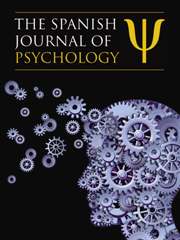Article contents
Analysis of Pseudohomophone Orthographic Errors through Functional Magnetic Resonance Imaging (fMRI)
Published online by Cambridge University Press: 04 December 2017
Abstract
The study of orthographic errors in a transparent language such as Spanish is an important topic in relation to writing acquisition because in Spanish it is common to write pseudohomophones as valid words. The main objective of the present study was to explore the possible differences in activation patterns in brain areas while processing pseudohomophone orthographic errors between participants with high (High Spelling Skills (HSS)) and low (Low Spelling Skills (LSS)) spelling orthographic abilities. We hypothesize that (a) the detection of orthographic errors will activate bilateral inferior frontal gyri, and that (b) this effect will be greater in the HSS group. Two groups of 12 Mexican participants, each matched by age, were formed based on their results in a group of spelling-related ad hoc tests: HSS and LSS groups. During the fMRI session, two experimental tasks were applied involving correct and pseudohomophone substitution of Spanish words. First, a spelling recognition task and second a letter searching task. The LSS group showed, as expected, a lower number of correct responses (F(1, 21) = 52.72, p <.001, η2 = .715) and higher reaction times compared to the HSS group for the spelling task (F(1, 21) = 60.03, p <.001, η2 = .741). However, this pattern was reversed when the participants were asked to decide on the presence of a vowel in the words, regardless of spelling. The fMRI data showed an engagement of the right inferior frontal gyrus in HSS group during the spelling task. However, temporal, frontal, and subcortical brain regions of the LSS group were activated during the same task.
Keywords
- Type
- Research Article
- Information
- Copyright
- Copyright © Universidad Complutense de Madrid and Colegio Oficial de Psicólogos de Madrid 2017
Footnotes
Guardia-Olmos, J., Zarabozo-Hurtado, D., Peró-Cebollero, M., Gudayol-Farré, E., Gómez-Vázquez, F. R., & González-Garrido, A. (2017). Analysis of pseudohomophone orthographic errors through functional magnetic resonance imaging (fMRI). The Spanish Journal of Psychology, 20. e74. Doi:10.1017/sjp.2017.72
References
- 2
- Cited by


